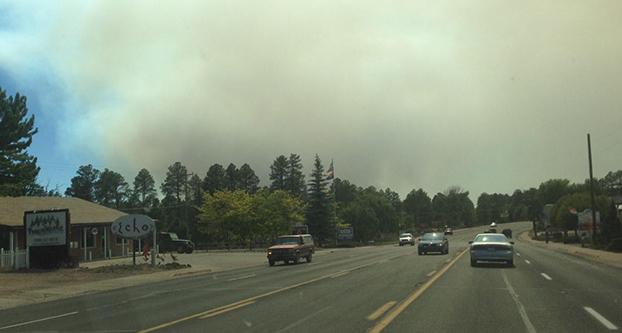Have you ever looked up at the gray haze that looms over Fresno in the afternoon hours and wondered “What is that and why is it there?”
Many might think Fresno’s notoriously unhealthy air is growing worse, but the opposite is true. The San Joaquin Valley Air Pollution Control District is hard at work cleaning up the valley’s air, and it’s paying off.
Despite drought and recent wildfires, Fresno’s air quality has steadily improved since 2002 and is expected to keep improving in the coming years. Fresno State students are encouraged to help make Fresno’s air cleaner for future generations.
Heather Heinks, a representative for the district, said most of the gray haze that hangs in the afternoon sky is made up of ozone and particulate matter.
“Ozone is not directly emitted out of any cars,” Heinks said. “But all the pollution, nitrous oxide, and VOCs [Volatile Organic Compound] that are emitted out of cars baking in the hot summer sun and becomes ozone at ground level.”
Ozone is harmless where it naturally occurs at 30,000 feet, but is extremely unhealthy at ground level where it can exacerbate asthma. Heinks said cars and diesel trucks are the leading contributors to air pollution and are responsible for 85 percent of the ozone that is trapped on the Valley floor.
To combat this problem, the district is helping local businesses and consumers switch to fuel efficient technologies. The district also has some tips for Fresno State students to help clean up the Valley air.
The district enforces more than 600 rules to reduce air pollution. They range from regulating residential wood burning to the regulation of agricultural production.
“The businesses in this Valley have invested billions in the last two decades to bring their equipment into the best available technology they can find.” Heinks said.
Heinks said the Stet District encourages local businesses to be more fuel efficient by offering grants.
“We funnel as much money as possible into the community and the Valley to help retrofit diesel trucks, to get people into electric vehicles,” she said.
Despite recent wildfires, the work and money is paying off. According to the most recent district report, July 2015 was the first summer month in Valley history to have zero unhealthy days due to ozone. Since then, the average number of unhealthy air days has steadily declined.
But there is still plenty of work to be done. Heinks said recent wildfires have resulted in a spike in the number of unhealthy air days. She recommends children and people with asthma avoid going outside on such days. Despite 2015’s low amount of ground level ozone, there were still some unhealthy air days that were severe enough to cancel sporting events.
Carrie Coll, senior associate athletics director at Fresno state, said a woman’s soccer match was canceled in September 2015 due to poor air quality created by the rough fire. No games or practices were canceled this year, though Coll said the athletics department references air quality measurement tools to ensure the air is healthy enough for athletes to be outside.
Fresno State students can help to ensure air quality continues to improve. Even subtle changes can help clean up the air. Heinks suggests avoiding drive thurs and idling in your car before class. Students can also cut their emissions output in half by carpooling with a friend.
“The air is absolutely improving.” Heinks said, “but we can’t do this alone. We need the community to help us if we want to keep seeing improvements.”




